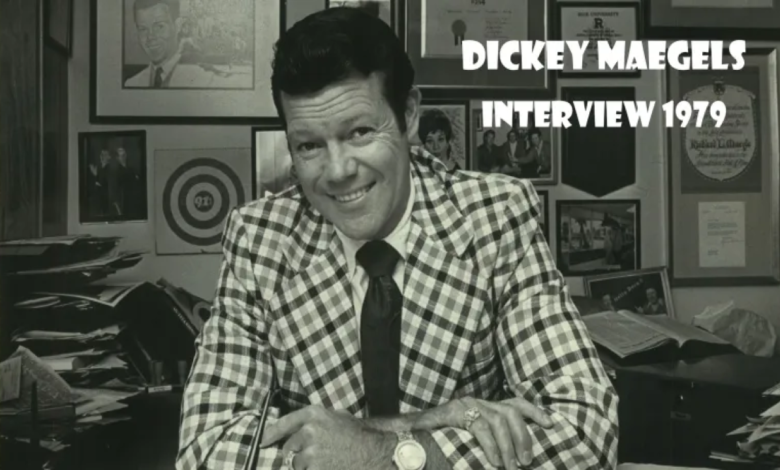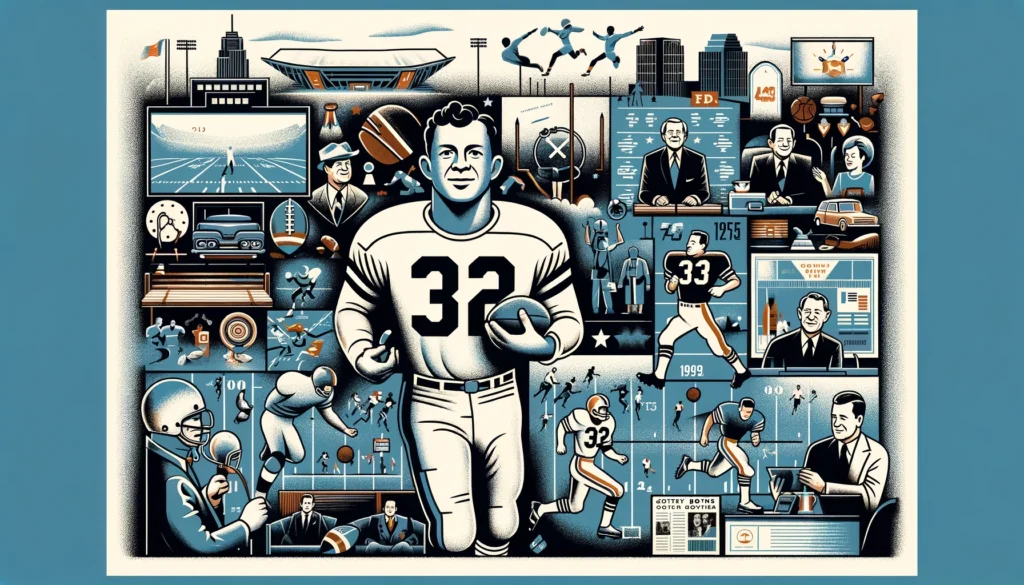The 1979 Dickey Maegle Interview: A Comprehensive Exploration

In 1979, Dickey Maegle, synonymous with one of college football’s most memorable moments, gave an interview that offered an in-depth look into his illustrious career and life beyond the gridiron. This article delves into the critical aspects of that interview, covering Maegle’s early life, the infamous 1954 Cotton Bowl incident, his career in the NFL, his struggles with injuries, and his life after retiring from professional football.
Early Life and Rise to Prominence
Dickey Maegle was born in Taylor, Texas, on December 14, 1934. Maegle’s athletic prowess was evident from a young age, excelling in football and track. His high school performance caught the attention of college recruiters, eventually leading him to Rice University, where he became a standout football player. Maegle’s college career was marked by his exceptional running ability, earning him All-American honors in 1953 and 1954.
The 1954 Cotton Bowl Incident
The 1954 Cotton Bowl is where Maegle’s name became etched in college football lore. As he broke away for a touchdown during the game, Alabama’s Tommy Lewis inexplicably came off the bench to tackle him. The act, which cost Alabama a penalty, awarded Maegle the touchdown, and despite the bizarre event, Rice went on to win the game. Though overshadowing his college achievements to some extent, this incident became a defining moment in Maegle’s career.

Transition to the NFL and Challenges
Maegle was drafted 10th overall by the San Francisco 49ers in 1955, signaling the start of his professional career. However, his transition to the NFL was met with challenges. The 49ers used him primarily as a defensive back, a position shift that Maegle admitted affected his confidence and performance. Additionally, his career was plagued with injuries, with Maegle dealing with nagging knee and ankle issues that hampered his ability to maintain the level of play he was known for in college.
Life After Football
The 1979 interview also sheds light on Maegle’s life after retiring from the NFL in 1958. Mangle spoke candidly about the struggle to find his identity post-football, a journey many athletes face upon leaving. However, he eventually succeeded in real estate and business, carving a new path in Texas. Maegle’s reflections on his post-football life reveal a man at peace with his past and content with his life’s course.
Legacy and Impact of the Interview
The 1979 interview with Dickey Maegle is significant for several reasons. It provided a rare, in-depth look at a former athlete reflecting on a career filled with spectacular highs and challenging lows. Maegle’s openness about his struggles in the NFL, his iconic moment at the Cotton Bowl, and his life after football added layers to the public’s understanding of the man behind the famous tackle. The interview highlighted Maegle’s contributions to football and his resilience and ability to adapt and thrive beyond his athletic career.
In conclusion, Dickey Maegle’s 1979 interview is a valuable piece of sports history, offering insight into the life of one of football’s most memorable figures. Through his own words, Maegle painted a picture of a life shaped by extraordinary moments on the football field and the journey that followed. His story is a testament to the enduring spirit of an athlete who faced adversity with grace and emerged with a legacy that transcends the sport.
FAQs on Dickey Maegle’s 1979 Interview
1. What was the Dickey Maegle 1979 interview about?
The Dickey Maegle 1979 interview was a comprehensive discussion that covered various aspects of his life and career beyond the infamous 1954 Cotton Bowl incident. It offered insights into Maegle’s struggles in the NFL, his life after football, and his reflections on the notorious tackle by Tommy Lewis.
2. Why is the 1954 Cotton Bowl incident significant in Dickey Maegle’s career?
During the 1954 Cotton Bowl, Dickey Maegle was tackled by Alabama’s Tommy Lewis, who came off the bench in an unprecedented move that cost Alabama a penalty and awarded Maegle a touchdown. This incident is significant because it overshadowed Maegle’s college career and became a defining moment in sports history, showcasing sportsmanship and the unpredictability of live sports events.
3. How did Dickey Maegle’s NFL career pan out after his college success?
Maegle faced difficulties adjusting to the NFL, where he was primarily used as a defensive back rather than his college running back position. Their injuries hamper could have been improvisation, and he never reached his full potential in the professional league. Despite these challenges, Maegle’s athletic prowess in college remained a highlight of his sports career.
4. What did Dickey Maegle do after retiring from professional football?
After leaving the NFL by 1958, Maegle struggled to find his path but eventually succeeded in real estate and business back in Texas. He reflected on his life post-football with peace and fulfillment, highlighting the transition from sports to business and personal growth.
5. How did Dickey Maegle view the infamous tackle by Tommy Lewis in hindsight?
Maegle expressed no ill will towards Tommy Lewis, understanding it as a “heat of the moment” mistake. He emphasized that the notoriety of the tackle did not bother him and preferred to be remembered for his entire career rather than just that one play.
6. Has Dickey Maegle been involved in football or sports after his NFL career?
The interview does not detail Maegle’s involvement in sports after his NFL career, focusing instead on his reflections on his playing days and life beyond the gridiron. However, Maegle’s legacy in college football and notable moments like the 1954 Cotton Bowl remain a significant part of his story.
7. What legacy does Dickey Maegle leave behind?
His exceptional college football career marks Dickey Maegle’s legacy, his resilience in facing challenges on and off the field, and his candid reflections on life after football. The 1979 interview adds depth to his legacy, offering a personal glimpse into the man behind the famous tackle, highlighting his humility, perspective, and contributions beyond sports.
Also Read: Unlocking the Potential: Understanding the Importance of Unblock 911




